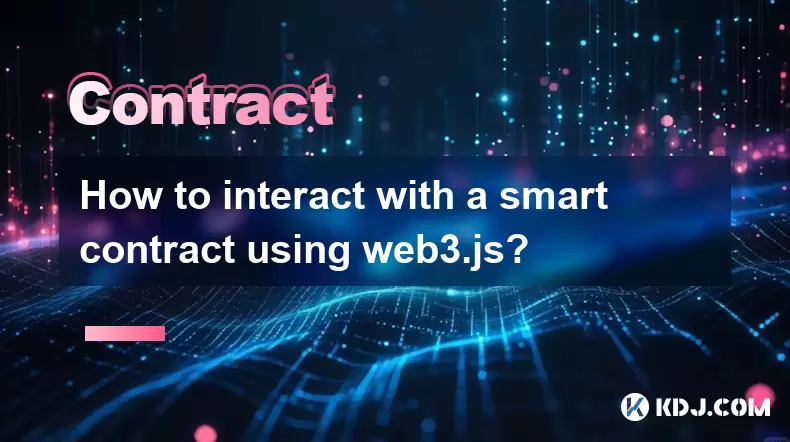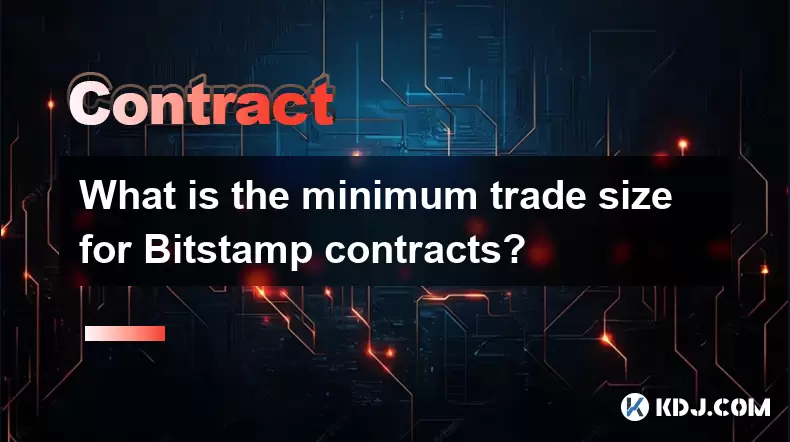-
 Bitcoin
Bitcoin $118400
-0.80% -
 Ethereum
Ethereum $3596
-2.37% -
 XRP
XRP $3.217
-9.51% -
 Tether USDt
Tether USDt $1.000
0.02% -
 BNB
BNB $772.6
-0.15% -
 Solana
Solana $188.6
-5.66% -
 USDC
USDC $0.9999
0.01% -
 Dogecoin
Dogecoin $0.2426
-7.72% -
 TRON
TRON $0.3096
-1.18% -
 Cardano
Cardano $0.8165
-7.98% -
 Hyperliquid
Hyperliquid $43.76
-1.39% -
 Stellar
Stellar $0.4266
-9.57% -
 Sui
Sui $3.706
-6.29% -
 Chainlink
Chainlink $18.03
-6.17% -
 Hedera
Hedera $0.2481
-8.23% -
 Bitcoin Cash
Bitcoin Cash $513.1
-1.17% -
 Avalanche
Avalanche $23.88
-4.61% -
 Litecoin
Litecoin $112.7
-4.51% -
 UNUS SED LEO
UNUS SED LEO $8.963
-0.11% -
 Shiba Inu
Shiba Inu $0.00001397
-7.98% -
 Toncoin
Toncoin $3.169
-6.65% -
 Ethena USDe
Ethena USDe $1.001
0.01% -
 Polkadot
Polkadot $4.156
-5.72% -
 Uniswap
Uniswap $10.06
-4.32% -
 Monero
Monero $315.9
-2.33% -
 Bitget Token
Bitget Token $4.668
-2.88% -
 Pepe
Pepe $0.00001280
-6.97% -
 Dai
Dai $0.9999
0.02% -
 Aave
Aave $290.5
-4.57% -
 Bittensor
Bittensor $426.9
-2.77%
How to interact with a smart contract using web3.js?
web3.js enables developers to interact with Ethereum smart contracts by providing tools to read data, send transactions, and listen for events via HTTP, IPC, or WebSocket connections.
Jul 23, 2025 at 03:21 pm

What is web3.js and Why is it Used for Smart Contract Interaction?
web3.js is a collection of libraries that allow developers to interact with a local or remote Ethereum node using HTTP, IPC, or WebSocket. It provides a convenient way to communicate with the Ethereum blockchain, enabling developers to send transactions, read data from the blockchain, and interact with deployed smart contracts.
Smart contracts are self-executing agreements with the terms directly written into code. They run on the Ethereum Virtual Machine (EVM) and can be accessed through external accounts or other contracts. To perform actions on a smart contract—such as calling functions or sending Ether—web3.js offers a robust and flexible API. This makes it a preferred tool for developers building decentralized applications (dApps) that require backend interaction with the Ethereum network.
Setting Up the Environment for web3.js Integration
Before interacting with a smart contract, it's essential to set up the development environment properly. The first step is to install web3.js in your project. This can be done using npm:
npm install web3Once installed, you can import and initialize the Web3 object in your JavaScript file. The Web3 object connects to an Ethereum node, which can be a local node or a remote one like Infura or Alchemy.
const Web3 = require('web3');
const web3 = new Web3('https://mainnet.infura.io/v3/YOUR_INFURA_PROJECT_ID');To interact with a specific smart contract, you'll need the contract address and the ABI (Application Binary Interface). The ABI is a JSON file that describes the contract's functions, events, and parameters. It acts as an interface between the smart contract and your application.
Connecting to a Smart Contract
After setting up the environment, the next step is to connect to the smart contract using its ABI and address. This is done by creating a contract instance in web3.js.
const contractAddress = '0x...'; // Replace with your contract address
const abi = [...]; // Replace with your contract's ABIconst contract = new web3.eth.Contract(abi, contractAddress);
Once the contract instance is created, you can call its methods or send transactions to it. There are two types of interactions: read operations (which do not modify the blockchain state) and write operations (which do). Read operations are usually free and can be executed using the call() method, while write operations require a transaction and consume gas.
Reading Data from a Smart Contract
To retrieve data from a smart contract without modifying the blockchain state, you can use the call() method. This is useful for functions like getBalance() or getName() that return values.
contract.methods.name().call()
.then(console.log)
.catch(console.error);In this example, the name() function of the contract is called, and the result is printed to the console. Since this is a read operation, no transaction is sent to the blockchain, and no gas fees are incurred. It's important to note that the function must be marked as view or pure in Solidity for this to work correctly.
If the function requires parameters, they can be passed directly in the call() method. For example:
contract.methods.balanceOf('0x...').call()
.then(console.log)
.catch(console.error);This retrieves the balance of a specific Ethereum address from an ERC-20 token contract.
Sending Transactions to a Smart Contract
To modify the state of the blockchain, such as transferring tokens or updating contract data, you need to send a transaction. This involves signing the transaction with the sender's private key and paying gas fees.
const account = '0x...'; // Replace with your Ethereum account address
const privateKey = '0x...'; // Replace with your private keyweb3.eth.accounts.wallet.add(privateKey);
contract.methods.transfer('0xRecipientAddress', '100')
.send({ from: account, gas: 200000 })
.on('transactionHash', hash => console.log(hash))
.on('receipt', receipt => console.log(receipt))
.on('error', error => console.error(error));
In this example, the transfer() function of an ERC-20 token contract is called. The .send() method is used to execute the transaction. It requires the sender's address and a gas limit. Events like transactionHash, receipt, and error can be used to monitor the transaction's status.
Before sending a transaction, it's crucial to handle the private key securely. Never hardcode it in production code, and consider using wallet services like MetaMask or hardware wallets for better security.
Handling Events and Listening for Contract Logs
Smart contracts can emit events when certain actions occur. These events are stored in the blockchain's logs and can be monitored using web3.js. This is useful for tracking user actions, contract updates, or system alerts.
contract.events.Transfer({
fromBlock: 0,
toBlock: 'latest'
})
.on('data', event => console.log(event))
.on('error', error => console.error(error));The above code listens for all Transfer events emitted by the contract. The fromBlock and toBlock parameters define the range of blocks to search for events. This feature allows developers to build real-time applications that react to on-chain activities.
You can also use filters to narrow down the events based on specific criteria. For example, filtering transfers to a particular address:
contract.events.Transfer({
filter: { to: '0xRecipientAddress' },
fromBlock: 0,
toBlock: 'latest'
})
.on('data', event => console.log(event));Frequently Asked Questions
Q: What is the difference between call() and send() in web3.js?
A: The call() method is used to read data from the blockchain without modifying its state and does not require gas. The send() method is used to execute transactions that change the blockchain state and requires gas fees.
Q: Can I interact with a smart contract without a private key?
A: Yes, you can perform read operations using call() without a private key. However, write operations using send() require a valid Ethereum account with sufficient Ether to pay for gas.
Q: How do I get the ABI of a deployed smart contract?
A: The ABI is generated when you compile the Solidity code. If the contract is already deployed, you can retrieve its ABI from block explorers like Etherscan if the contract's source code is verified.
Q: What should I do if my transaction is stuck?
A: You can check the transaction status using tools like Etherscan or by listening to events like receipt. If the transaction is pending for too long, you may need to increase the gas price and resend it.
Disclaimer:info@kdj.com
The information provided is not trading advice. kdj.com does not assume any responsibility for any investments made based on the information provided in this article. Cryptocurrencies are highly volatile and it is highly recommended that you invest with caution after thorough research!
If you believe that the content used on this website infringes your copyright, please contact us immediately (info@kdj.com) and we will delete it promptly.
- Chainlink (LINK) Price Breakout: Bullish Signals and Tokenization Trends
- 2025-07-24 02:50:12
- Chasing 1000x Gains: Your Summer Crypto Investment Guide
- 2025-07-24 02:50:12
- Bitcoin, Pepe Dollar, and Meme Utility: A New Wave in Crypto?
- 2025-07-24 02:30:13
- BNB's Bullish Momentum: Riding the Market Recovery Wave
- 2025-07-24 03:30:12
- FLR Price, SparkDEX, and Token Launch: What's the Buzz?
- 2025-07-24 03:30:12
- Meme Coins, Utility, and Presales: What's the Hype?
- 2025-07-24 02:30:13
Related knowledge

Why is my Bitstamp futures position being liquidated?
Jul 23,2025 at 11:08am
Understanding Futures Liquidation on BitstampFutures trading on Bitstamp involves borrowing funds to open leveraged positions, which amplifies both po...

Does Bitstamp offer inverse contracts?
Jul 23,2025 at 01:28pm
Understanding Inverse Contracts in Cryptocurrency TradingIn the realm of cryptocurrency derivatives, inverse contracts are a specific type of futures ...

How to find your Bitstamp futures trade history?
Jul 23,2025 at 08:07am
Understanding Bitstamp and Futures Trading AvailabilityAs of the current state of Bitstamp’s service offerings, it is critical to clarify that Bitstam...

Can I use a trailing stop on Bitstamp futures?
Jul 23,2025 at 01:42pm
Understanding Trailing Stops in Cryptocurrency TradingA trailing stop is a dynamic type of stop-loss order that adjusts automatically as the price of ...

What is the minimum trade size for Bitstamp contracts?
Jul 23,2025 at 07:14pm
Understanding Bitstamp and Its Contract OfferingsBitstamp is one of the longest-standing cryptocurrency exchanges, established in 2011, and known for ...

How to trade ETH perpetuals on Bitstamp?
Jul 23,2025 at 03:28am
Understanding ETH Perpetual ContractsETH perpetual contracts are derivative products that allow traders to speculate on the price of Ethereum without ...

Why is my Bitstamp futures position being liquidated?
Jul 23,2025 at 11:08am
Understanding Futures Liquidation on BitstampFutures trading on Bitstamp involves borrowing funds to open leveraged positions, which amplifies both po...

Does Bitstamp offer inverse contracts?
Jul 23,2025 at 01:28pm
Understanding Inverse Contracts in Cryptocurrency TradingIn the realm of cryptocurrency derivatives, inverse contracts are a specific type of futures ...

How to find your Bitstamp futures trade history?
Jul 23,2025 at 08:07am
Understanding Bitstamp and Futures Trading AvailabilityAs of the current state of Bitstamp’s service offerings, it is critical to clarify that Bitstam...

Can I use a trailing stop on Bitstamp futures?
Jul 23,2025 at 01:42pm
Understanding Trailing Stops in Cryptocurrency TradingA trailing stop is a dynamic type of stop-loss order that adjusts automatically as the price of ...

What is the minimum trade size for Bitstamp contracts?
Jul 23,2025 at 07:14pm
Understanding Bitstamp and Its Contract OfferingsBitstamp is one of the longest-standing cryptocurrency exchanges, established in 2011, and known for ...

How to trade ETH perpetuals on Bitstamp?
Jul 23,2025 at 03:28am
Understanding ETH Perpetual ContractsETH perpetual contracts are derivative products that allow traders to speculate on the price of Ethereum without ...
See all articles

























































































